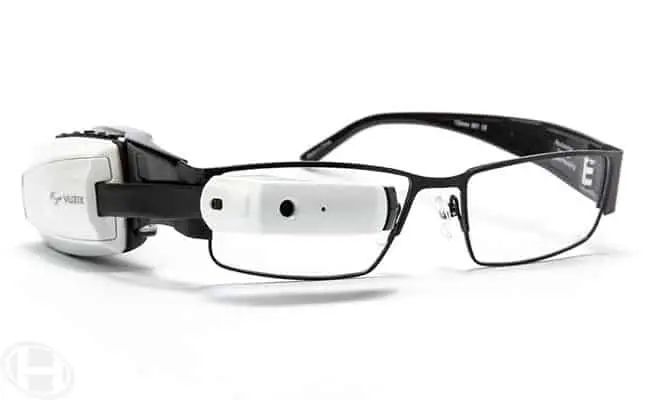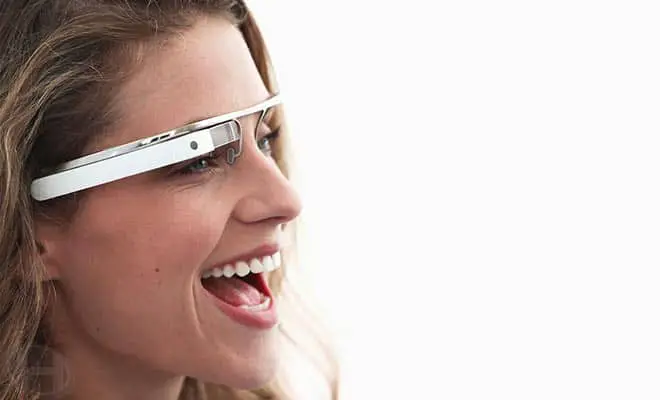With Google Glass and various other smart glasses on the cusp of release, and the public’s excited clamoring, it’s important to take a step back and look at how modern technology advanced to the point where anyone could walk in public with a portable computer attached to their head. It’s an interesting exercise to observe how the past, present, and future of technology has intertwined itself to create the modern state of computing that we recognize today.
Smart Glasses: The Past
While the concept of a wearable computer can be traced back to origins in casinos during the 1960s, the concept of a portable computer as we know it, smart glasses and all, began decades ago as an academic query posited by MIT and its alumni. Of its biggest names, perhaps Thad Starner and Steve Mann are two of the most important. These two juggernauts of the wearable computer industry have nearly half a century’s worth of computer knowledge between them, but their insights into technology are vastly different.
In general, Starner was always more interested in the practical applications of technology such as Google Glass, whereas his contemporary, Mann, was more interested in the theoretical and philosophical questions that such technology could awaken. In fact, Mann puts forth three key concepts for any smart glasses technology, as well as their applicable uses: personal, mediation, and augmentation.
In essence, augmentation refers to the idea of smart glasses enhancing parts of your brain to make you more than human. One of the researchers on Project Glass, Richard DeVaul, has experimented in the past with glasses that could trigger memories in users when prompted with subliminal messaging.
The idea of mediation via smart glasses is not a particularly new one either, even if the technology seems like it would be more at home in a science fiction novel. The concept of mediation stems from the way information can be shared when everyone wears smart glasses as a part of their daily routine. Once the technology has become ubiquitous, people could potentially use their smart glasses to convey information to others in any manner they desired. Physical aesthetics would become secondary to the visual imagery you provide other people’s smart glasses, creating a world that is built on “shared truths” rather than a harsh reality.
For the personal side of the smart glasses equation, one need only look at their own social gatherings for the value of such technology always being available. To that end, Google has been designing their smart glasses to be a permanent social fixture that will provide the same, if not more, accessibility and function as smartphones and traditional computer counterparts.
Smart Glasses In The Present
With Google Glass being released to key members of the public, as well as already being spotted in California, it’s only a matter of time before the general public has their hands on this exciting technology. There are competitors to the smart glasses throne, to be sure, such as the Vuzix M-100. With experience in the past with the United States military as designers of heads-up displays, Vuzix has put itself at the forefront of the smart glasses race with an expected release date for consumers of late 2013.

While the fact that these products are on their way to retail shelves is exciting, there are still some obstacles for these smart glass manufacturers to overcome. Namely, style has become an issue for an industry that has historically been poorly received for its fashion sense. While products like Apple’s iPod and iPhone have almost transformed gadgets to fashion statements, Google and other companies will need to take a step back and re-evaluate how they want their wearable computers of the future to appear. As a result, Google has been experimenting with both the size of the frames as well as the colors they can appear in. Currently, the tiny screen that accompanies their smart glasses looks much smaller from an observers point of view than it does to the individual user.
Of course, Google Glass is likely the first step in what Google believes will be a major shift towards universal computing. The company hopes that it can achieve a future that will allow computers and the Internet to be accessed from virtually anywhere, without having to press any buttons to get to it.
The Future Of Smart Glasses
As previously mentioned, Google is not the only company with its sights set on the future of computing: Apple has also begun research into its own competing product. While there are rumors of Apple’s own iGlasses, what is known is their experimentation with what is currently being referred to as the iWatch. Whereas Google’s product is attached to the face and can be considered somewhat intrusive, Apple appears to be prioritizing comfort over function by associating their product with the much more user friendly wrist.
Many of the problems that plague smart glasses technology can be traced back to society’s own hang-ups and prejudices towards the advancement of technology. People worry about self-conscious questions like how these products will make them look when they should really be more concerned with its implications for the future. Of course, there are those that look to the future, but meet it with trepidation instead of excitement. Just as the conspiracy theorists have worried for centuries that the government is controlling people through the water, some wonder what “big brother” type of future we are headed towards when everyone comes equipped with a standard computer attached to their face (or wrist).
The reality though, is that the future of technology like this isn’t one of automaton obediency. Just as the Internet brought global communication to a level never witnessed before in the history of mankind, so too can the future of technology when everyone has access to both the Internet and computers without having to even lift a finger to use it.

